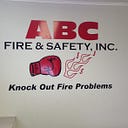Fire Extinguisher Ratings Explained: What to Look for in Your Kitchen
In a world where cooking is often seen as an art form, the kitchen can also become a battleground for fire safety. With the abundance of flammable materials — such as oils, paper towels, and wooden utensils — understanding fire extinguisher ratings is crucial for every kitchen. A kitchen fire extinguisher should be selected with care, ensuring it meets specific criteria for effectiveness against various types of fires. This article will explain the different fire extinguisher ratings and what to look for when choosing a fire extinguisher for your kitchen.
Understanding Fire Classes
Fire extinguishers are categorized based on the types of fires they are designed to combat. The National Fire Protection Association (NFPA) classifies fires into several distinct classes:
- Class A Fires: These involve ordinary combustibles such as wood, paper, cloth, and some plastics. Class A fires are the most common in residential settings, including kitchens.
- Class B Fires: These fires involve flammable liquids, such as oil, gasoline, grease, and paints. Kitchen fires often fall into this category, particularly when cooking with oils.
- Class C Fires: These involve electrical equipment, including appliances, wiring, and circuit breakers. If an electrical device catches fire, it is crucial to use an extinguisher rated for Class C fires.
- Class K Fires: Specifically related to cooking oils and fats, Class K fires are particularly relevant in kitchens. These fires require special extinguishing agents that can effectively cool and smother the flames.
- Class D Fires: Although less common in kitchens, Class D fires involve combustible metals like magnesium or titanium. These fires require specialized extinguishing agents and are usually found in industrial settings.
Understanding these classifications helps you choose the right fire extinguisher for your kitchen, ensuring you are prepared for any potential fire scenario.
Fire Extinguisher Ratings
Fire extinguishers are also rated based on their effectiveness against specific types of fires. The rating combines letters and numbers, providing insight into the extinguisher’s capacity:
- Class A: Extinguishers are rated with a number indicating the amount of water equivalent they contain. For example, a rating of “2A” means the extinguisher is equivalent to 2.5 gallons of water.
- Class B: The rating consists of a number indicating the size of the fire the extinguisher can extinguish. For example, a “10B” rating means it can extinguish a fire involving 10 square feet of flammable liquid.
- Class C: Class C extinguishers do not have a numerical rating but are marked with a “C” to indicate they are safe for use on electrical fires.
- Class K: Similar to Class B, Class K extinguishers are rated based on their effectiveness against kitchen fires, which often involve cooking oils. These extinguishers can be designated with a “K” followed by a number indicating their effectiveness.
When selecting a kitchen fire extinguisher, look for a multi-class rating, such as “ABC” or “BC.” This versatility allows the extinguisher to tackle different types of fires, enhancing safety in the kitchen.
Selecting the Right Kitchen Fire Extinguisher
When considering a fire extinguisher for your kitchen, several factors come into play:
1. Type of Cooking
The type of cooking you do influences the kind of extinguisher you should have. For instance, if you frequently fry foods in oil, a Class K fire extinguisher is essential. This type is specifically designed to handle fires caused by cooking oils and fats, ensuring effective suppression.
2. Placement
Proper placement of your kitchen fire extinguisher is vital. It should be easily accessible, mounted near kitchen exits, and away from potential fire hazards like the stove. The extinguisher should be at a height that allows everyone in the household to reach it comfortably.
3. Size Matters
Fire extinguishers come in various sizes, typically ranging from 2.5 to 20 pounds. While larger extinguishers contain more extinguishing agent, they can also be heavier and more cumbersome to use. A 5-pound extinguisher is often sufficient for residential kitchens, as it is manageable while still providing adequate fire-fighting capability.
4. Maintenance and Inspection
Regular maintenance and inspection are crucial for ensuring your kitchen fire extinguisher is operational when needed. Check the pressure gauge monthly to ensure it’s in the green zone. It’s also essential to have a professional inspection annually to ensure that the extinguisher meets safety standards.
5. Training
Having a fire extinguisher is only part of the solution. Proper training on how to use it effectively is essential. Familiarize yourself and your family with the PASS technique: Pull the pin, Aim low, Squeeze the handle, and Sweep from side to side. Regular practice can ensure everyone feels confident in an emergency.
Conclusion
A kitchen fire extinguisher is an essential safety tool that can prevent small flames from turning into catastrophic disasters. By understanding fire extinguisher ratings and the types of fires that can occur in kitchens, you can make an informed decision when selecting the appropriate extinguisher. Ensure that you have a multi-class extinguisher, place it strategically, and maintain it regularly. Additionally, training yourself and your family on its use can save lives and property. In the end, being prepared is the best way to keep your kitchen safe and your cooking enjoyable.
